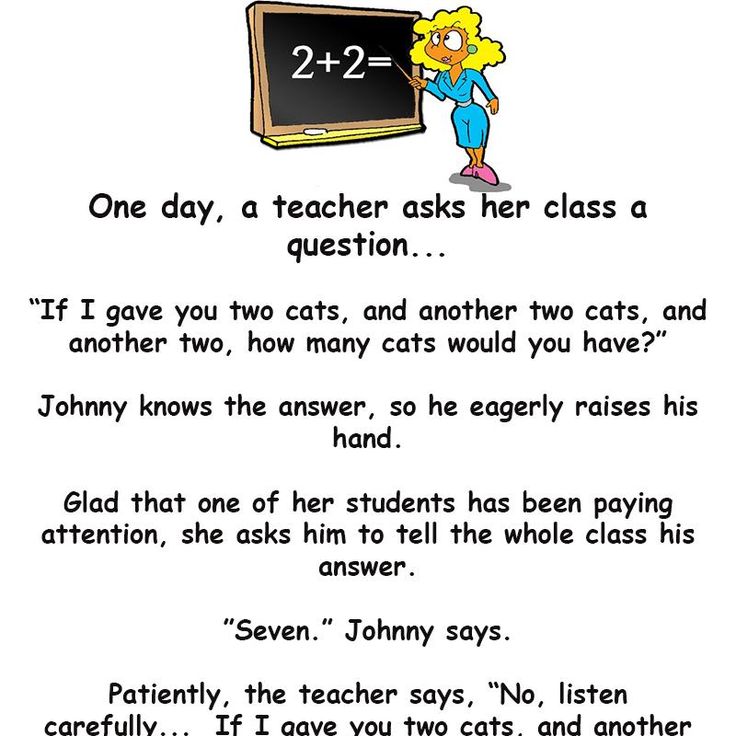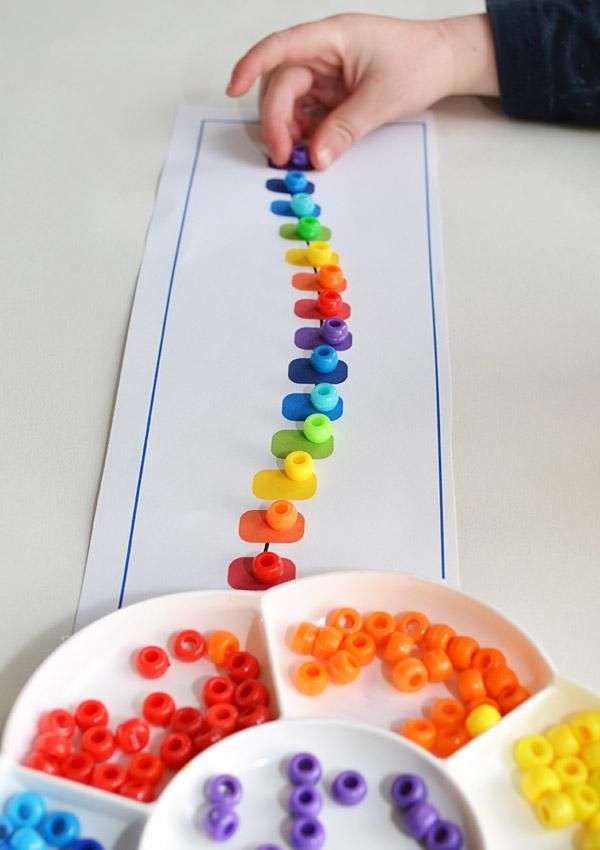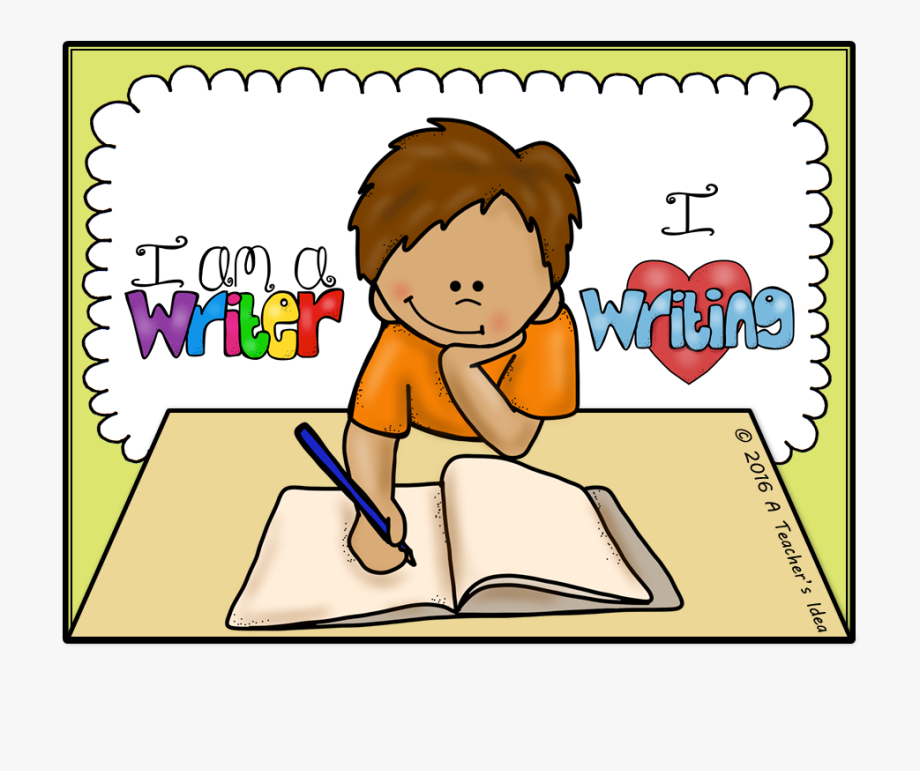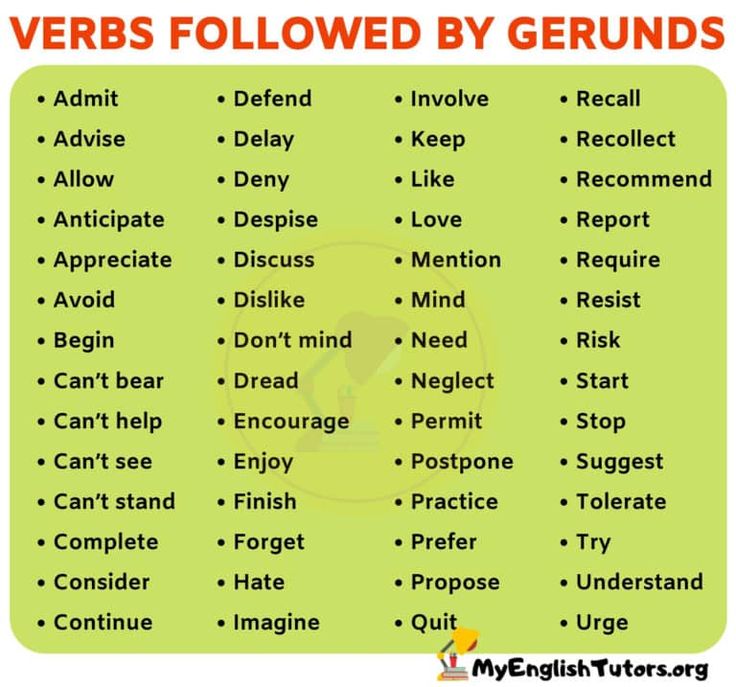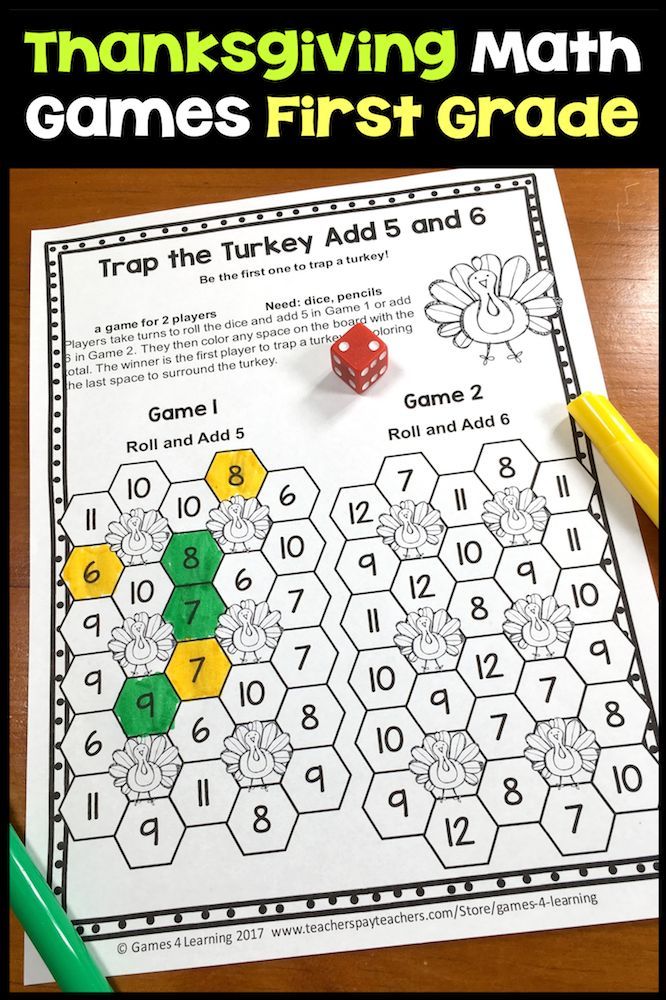What color is this song
What’s the Color of Your Favorite Song?
Imagine yourself as a graphic designer for New Age musician Enya, tasked with creating her next album cover. Which two or three colors from the grid below do you think would “go best” with her music?
Would they be the same ones you’d pick for an album cover or music video for the heavy metal band Metallica? Probably not.
For years, my collaborators and I have been studying music-to-color associations. From our results, it’s clear that emotion plays a crucial role in how we interpret and respond to any number of external stimuli, including colors and songs.
Colors of Songs
In one study, we asked 30 people to listen to four music clips, and simply choose the colors that “went best” with the music they were hearing from a 37-color array.
The image below shows the participants’ first-choice colors to the four musical selections.
Selection A, from Bach’s Brandenburg Concerto Number 2, caused most people to pick colors that were bright, vivid and dominated by yellows. Selection B, a different section of the very same Bach concerto, caused participants to pick colors that are noticeably darker, grayer and bluer. Selection C was an excerpt from a 1990s rock song, and it caused participants to choose reds, blacks and other dark colors. Meanwhile, selection D, a slow, quiet, “easy listening” piano piece, elicited selections dominated by muted, grayish colors in various shades of blue.
The Role of Emotion
But why do music and colors match up in this particular way?
We believe that it’s because music and color have common emotional qualities. Certainly, most music conveys emotion. Selection A “sounds” happy and strong, while B sounds sad and weak. C sounds angry and strong, and D sounds sad and calm. (Why this might be the case is something we’ll explore later.)
If colors have similar emotional associations, people should be able to match colors and songs that contain overlapping emotional qualities. They may not know that they’re doing this, but the results corroborate this idea.
We’ve tested our theory by having people rate each musical selection and each color on five emotional dimensions: happy to sad, angry to calm, lively to dreary, active to passive, and strong to weak.
We compared the results and found that they were almost perfectly aligned: the happiest-sounding music elicited the happiest-looking colors (bright, vivid, yellowish ones), while the saddest-sounding music elicited the saddest-looking colors (dark, grayish, bluish ones). Meanwhile, the angriest-sounding music elicited the angriest-looking colors (dark, vivid, reddish ones).
To study possible cultural differences, we repeated the very same experiment in Mexico. To our surprise, the Mexican and U.S. results were virtually identical, which suggests that music-to-color associations might be universal. (We’re currently testing this possibility in cultures, such as Turkey and India, where the traditional music differs more radically from Western music.)
These results support the idea that music-to-color associations in most people are indeed mediated by emotion.
True Synesthesia
There’s a small minority of people – maybe one in 3,000 – who have even stronger connections between music and colors. They are called chromesthetes, and they spontaneously “see” colors as they listen to music.
For example, a clip from the 2009 film “The Soloist” shows the complex, internally generated “light show” that the lead character – a chromesthetic street musician – might have experienced while listening to Beethoven’s Third Symphony:
Chromesthesia is just one form of a more general condition called synesthesia, in which certain individuals experience incoming sensory information both in the appropriate sensory dimension and in some other, seemingly inappropriate, sensory dimension.
The most common form of synesthesia is letter-to-color synesthesia, in which the synesthete experiences color when viewing black letters and digits.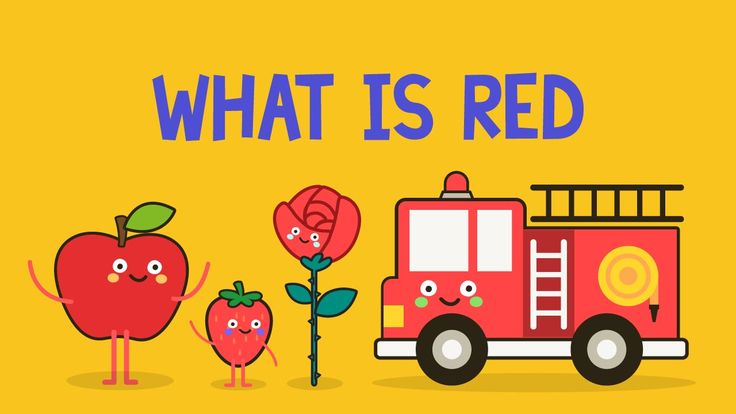 There are many other forms of synesthesia, including chromesthesia, that affect a surprising number of different sensory domains.
There are many other forms of synesthesia, including chromesthesia, that affect a surprising number of different sensory domains.
Some theories propose that synesthesia is caused by direct connections between different sensory areas of the brain. Other theories propose that synesthesia is related to brain areas that produce emotional responses.
The former theory implies little or no role for emotion in determining the colors that chromesthetes experience, whereas the latter theory implies a strong role for emotion.
Which theory is correct?
Synesthesia Versus Non
To find out, we repeated the music-color association experiment with 11 chromesthetes and 11 otherwise similar non-chromesthetes. The non-chromesthetes chose the colors that “went best” with the music (as described above), but the chromesthetes chose the colors that were “most similar to the colors they experienced while listening to the music.”
The left side of the image below shows the first choices of the syensethetes and non-synesthetes for fast-paced classical music in a major key (like selection A), which tends to sound happy and strong.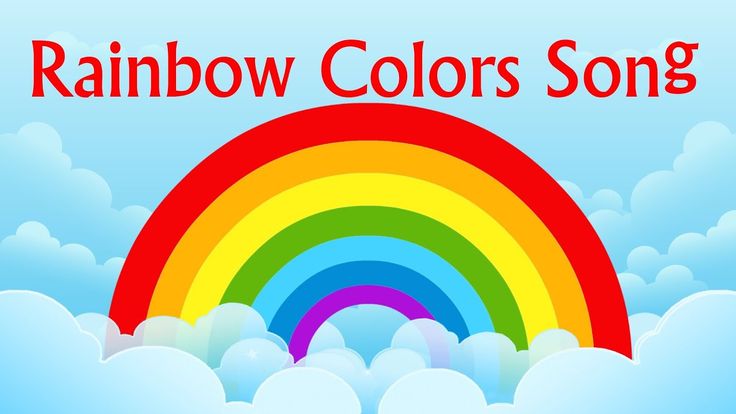 The right side shows the color responses for slow-paced classical music in a minor key (like selection B), which tends to sound sad and weak.
The right side shows the color responses for slow-paced classical music in a minor key (like selection B), which tends to sound sad and weak.
The color experiences of chromesthetes turned out to be remarkably like the colors that non-chromesthetes chose as going best with the same music.
But we mainly wanted to know how the non-chromesthetes and chromesthetes would compare in terms of emotional effects. Here are the results:
Interestingly, the emotional effects for chromesthetes were as strong as those for non-chromesthetes on some dimensions (happy/sad, active/passive and strong/weak), but weaker on others (calm/agitated and angry/not-angry).
The fact that chromesthetes exhibit emotional effects at all suggests that music-to-color synesthesia depends, at least in part, on neural connections that include emotion-related circuits in the brain. That they’re decidedly weaker in chromesthetes than non-chromesthetes for some emotions further suggests that chromesthetic experiences also depend on direct, non-emotional connections between the auditory and visual cortex.
Musical Anthropomorphism
The fact that music-to-color associations are so strongly influenced by emotion raises further questions. For example, why is it that fast, loud, high-pitched music “sounds” angry, whereas slow, quiet, low-pitched music “sounds” calm?
We don’t know the answers yet, but one intriguing possibility is what we like to call “musical anthropomorphism” – the idea that sounds are emotionally interpreted as being analogous to the behavior of people.
For example, faster, louder, high-pitched music might be perceived as angry because people tend to move and speak more quickly and raise their voices in pitch and volume when they’re angry, while doing the opposite when they’re calm. Why music in a major key sounds happier than music in a minor key, however, remains a mystery.
Artists and graphic designers can certainly use these results when they’re creating light shows for concerts or album covers for bands – so that “listening” to music can become richer and more vivid by “seeing” and “feeling” it as well.
But on a deeper level, it’s fascinating to see how effective and efficient the brain is at coming up with abstract associations.
To find connections between different perceptual events – such as music and color – our brains try to find commonalities. Emotions emerge dramatically because so much of our inner lives are associated with them. They are central not only to how we interpret incoming information, but also to how we respond to them.
Given the myriad connections from perceptions to emotions and from emotions to actions, it seems quite natural that emotions emerge so strongly – and perhaps unconsciously – in finding the best colors for a song.
This article was originally published on The Conversation.
What Color Is This Song?
Suppose you’re at a concert with a friend who leans over and whispers in your ear, “What color was that music?” It may seem like a strange question, but there are some people for whom the answer is entirely self-evident, and perhaps your friend is among them. Such individuals have a neurological condition called “sound-to-color synesthesia,” or “chromesthesia,” in which they effortlessly and spontaneously experience their own personal light show while hearing music and other sounds.1 Interestingly, many chromesthetes grow up assuming that everyone has the same visual responses to sounds as they do, and are shocked when they discover this is not so!
Such individuals have a neurological condition called “sound-to-color synesthesia,” or “chromesthesia,” in which they effortlessly and spontaneously experience their own personal light show while hearing music and other sounds.1 Interestingly, many chromesthetes grow up assuming that everyone has the same visual responses to sounds as they do, and are shocked when they discover this is not so!
Chromesthesia is relatively rare, occurring in only about 1 in 3,000 individuals. Nevertheless, a remarkable number of famous visual artists and musicians are members of this select group, including Vincent Van Gogh, Wassily Kandinsky, David Hockney, Nikolai Rimsky-Korsakov, Leonard Bernstein, and Duke Ellington. Kandinsky actually used his chromesthesia in creating his paintings. A formative experience, he wrote, was hearing Wagner’s Lohengrin: “I saw all my colors in spirit, before my eyes. Wild, almost crazy lines were sketched in front of me.”
Most of us don’t experience colored light shows when we listen to music.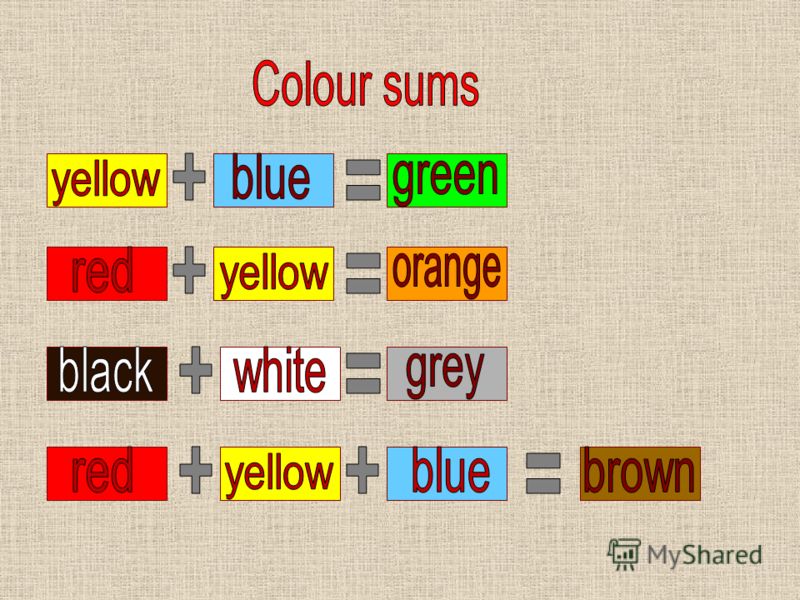 But recent scientific evidence shows that many non-synesthetes do have music-to-color associations similar to the cross-modal experiences of chromesthetes. In my laboratory at the University of California, Berkeley, we have been seeking answers to questions about the nature of music-to-color correspondences in both synesthetes and non-synesthetes.2,3 Our results have been eye-opening. They are uncovering the remarkably associative power of the human brain, and perhaps above all, underscoring the centrality of emotion in our mental lives.
But recent scientific evidence shows that many non-synesthetes do have music-to-color associations similar to the cross-modal experiences of chromesthetes. In my laboratory at the University of California, Berkeley, we have been seeking answers to questions about the nature of music-to-color correspondences in both synesthetes and non-synesthetes.2,3 Our results have been eye-opening. They are uncovering the remarkably associative power of the human brain, and perhaps above all, underscoring the centrality of emotion in our mental lives.
To see what I mean, let’s start with a mini-experiment. I invite you to listen to five different music clips and choose the three colors that you feel go best with each one. I won’t name the tunes yet because I don’t want that to influence the colors you choose.
Start with Example A, featured below. Listen to the sample by clicking on the triangular arrow on the sound bar. While listening, choose the three colors that you feel go best with this music from the array to the left, picking the best one first. Follow the same procedure for each music clip. After the fifth clip, you will see 15 color arrays that summarize everybody’s choices, including yours.
Follow the same procedure for each music clip. After the fifth clip, you will see 15 color arrays that summarize everybody’s choices, including yours.
Example A is from Bach’s Brandenburg Concerto No. 2. It’s in a major key and has a lively, dance-like tempo, featuring a trumpet solo bouncing along over an accompanying chamber orchestra. As you see, people picked a variety of colors, but they have strong similarities in being bright, vivid, and dominated by yellow hues.
Example B is from a different part of the same Brandenburg Concerto. Here, a violin and oboe trade a much slower melodic line in a minor key over the same chamber orchestra. The colors our participants chose are obviously different from the ones they chose for the other part of the same composition, being strikingly more dark, gray, and blue.
Example C is an instrumental excerpt of rock music by the 1990s power trio BBM. Its dominant features are prominent drum rhythms, fast-paced guitar riffs, and a loud, high-energy sound. The colors chosen are notably different from those for the two Brandenburg excerpts. In this case they are predominantly reds, black, and other dark colors.
The colors chosen are notably different from those for the two Brandenburg excerpts. In this case they are predominantly reds, black, and other dark colors.
Example D is “easy-listening” music, characterized by its laid-back tempo, minor key, and the quiet sound of the simple piano melody. The chosen colors are muted, cool colors dominated by various shades of blues and grays.
Finally, Example E is an excerpt from a salsa song. It is a fast, high-energy piece in a minor key that features lots of brass and catchy rhythms in the drums and other percussion. The colors are overwhelmingly shades of red and other “hot, spicy” colors, such as oranges and yellows.
Why, then, do we choose the colors we do? An important part of the answer comes from certain features of the music itself. Fast-paced music in the major mode, such as in Example A, tends to elicit bright, vivid, warm colors, such as intense yellows. Slow-paced, quieter selections in the minor mode, such as in Examples B and D, are more likely to evoke darker, grayer, cooler colors, such as shades of blue, purple, and gray.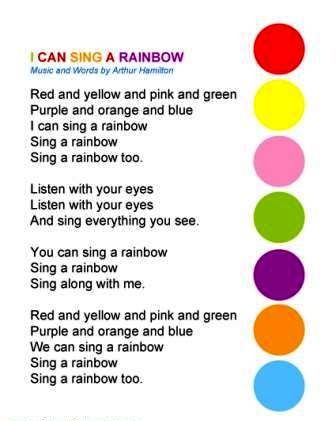
Fast-paced, complex, high-energy music with a driving beat and distorted sounds, such as Example C, brings out reds and blacks more than any of the others. Example E is a bit unusual in that it is fast-paced and energetic, but in a minor key, and with a complex, distinctive, Afro-Cuban beat. These features led people to choose vivid “hot” colors that might even be termed “spicy.”
As these brief descriptions imply, the musical features that matter most in determining the colors people choose include tempo (slow to fast), energy (low to high), volume (soft to loud), mode (minor to major), pitch (low to high), harmonic and melodic content (consonant to dissonant), complexity (simple to complex), and distortion (clear to distorted).
But there is another way to look at these choices, one that centers on emotion. Consider how you might describe the emotional qualities of the first four musical selections. Roughly speaking, Example A sounds happy and strong, Example B sounds sad and weak, Example C sounds angry and strong, and Example D sounds calm and a bit sad.
Why do we choose the colors we do? An important part of the answer comes from certain features of the music itself.
If colors have analogous emotional qualities, people might simply pick the colors whose emotion best matches that of the music. Look again at the color arrays and consider which one looks happiest, which looks saddest, which angriest, and which calmest. We had participants rate the happiness, sadness, angriness, and calmness of each of the 37 colors and then computed the average value of each emotion in the color choices they made for different musical clips. It turned out that array A contains the happiest colors, B the saddest colors, C the angriest colors, and D the calmest colors.
Such findings suggest that non-synesthetes perform this music-to-color association task by choosing the colors whose emotional associations best match the emotional qualities of the music. We computed a statistical measure of how well the emotional ratings of the musical selections predict the emotional ratings of the colors people chose as going best with that music (and vice versa). For the four emotional dimensions we studied—happy/sad, angry/calm, strong/weak, and lively/dreary—the correlations were extremely high. They showed that if you know how happy (or sad) a given piece of music sounds, you can predict with great accuracy how happy (or sad) the colors they chose as going best with it will be. The colors may differ in many ways, but they will tend to be “happy” ones.
For the four emotional dimensions we studied—happy/sad, angry/calm, strong/weak, and lively/dreary—the correlations were extremely high. They showed that if you know how happy (or sad) a given piece of music sounds, you can predict with great accuracy how happy (or sad) the colors they chose as going best with it will be. The colors may differ in many ways, but they will tend to be “happy” ones.
We further tested our intuition about emotions by investigating how participants responded to faces expressing various emotions. We asked participants to perform the same test again, but this time, they were given pictures of faces expressing various emotions. We found that the correlations between the emotional ratings of the expressive faces—happy, sad, angry, calm—and the emotional ratings of the 37 colors were very high. Strong connections also emerged between emotional ratings of musical selections and emotional faces. These results further support the claim that emotions are involved in the links we discovered from music to color.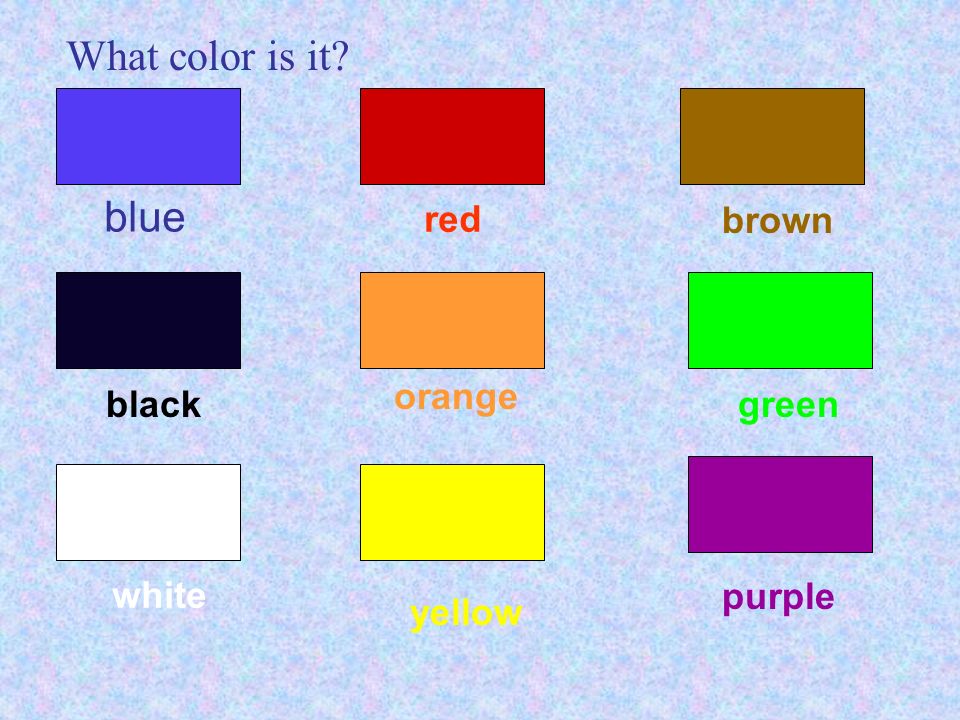
We repeated the same experiments with collaborators in Mexico using the same music and the same colors to examine the nature of cultural differences in music-to-color associations. The Mexican and United States results were virtually identical, with equally high emotional correlations for music-to-color associations. These findings suggest that such emotion-based mappings in non-synesthetes are cross-culturally robust and might even be universal.
The existence of emotional effects in music-to-color associations of non-synesthetes provides a window into the nature of chromesthesia. Given that signals from the five senses—sight, hearing, touch, taste, and smell—enter the human brain in different anatomical regions, you might ask why auditory and visual experiences interact with each other at all. One of the most important reasons is to enable our brains to sort out sensory events from different modalities that correspond to the same event—such as when our eyes register the sight of a glass shattering to pieces as it hits the floor at the same time that our ears register the sound of it breaking. Cross-modal connections between the senses enable our brains to integrate and make sense of the complex multisensory inputs that bombard us all the time.
Cross-modal connections between the senses enable our brains to integrate and make sense of the complex multisensory inputs that bombard us all the time.
Scientists do not fully understand the biological mechanisms that underlie chromesthesia. Some propose that synesthesia results from neural “cross-wiring” between different sensory areas of the brain, such as direct neural connections from the auditory cortex to the visual cortex in the case of chromesthesia.4 Others propose that the neural circuits responsible for synesthesia are more complex, including mediation through activity in other brain regions.5,6 According to this view, neural activity in the auditory cortex would cause activation in some other mediating brain area, which would, in turn, cause synesthetic activity in the visual cortex.
If chromesthetes show effects of emotion similar to those for non-synesthetes, it would suggest that chromesthesia is more likely to rely on neural activity through mediating brain regions, such as the amygdala or other structures of the limbic system involved in emotional processing, than on direct connections between the auditory and visual cortexes. (Because the two possibilities are not mutually exclusive, it is also possible that both direct and indirect connections are in effect.)
(Because the two possibilities are not mutually exclusive, it is also possible that both direct and indirect connections are in effect.)
To study the relation between synesthetic experiences and non-synesthetic associations, we used the same paradigm described above. We found 11 chromesthetes near Berkeley who experience colors to music. We also tested 11 non-synesthetes who were matched with the synesthetes in age, gender, musical training, and color training.
Everyone first chose three colors for 18 pieces: six each by Bach, Mozart, and Brahms. The only difference was their task. The non-synesthetes chose the colors that “went best” with the music, as you did in our mini-experiment. The synesthetes, however, chose the colors that were “most similar to the colors they experienced while hearing the music.” After performing this music-to-color task, everyone rated each musical selection and each color for their emotional qualities. The primary question of interest was how the choices of the synesthetes would compare to those of the non-synesthetes in terms of their emotional correlations.
Figure 2 below shows the first-choices of the 11 music-to-color synesthetes and the 11 matched control participants for six selections of classical music: three selections of fast, major-key music by Bach, Mozart, and Brahms, which sound happy and strong, versus three selections of slow, minor-key music by the same composers, which sound sad and weak.
Figure 2As you see, the colors reported by the chromesthetes as most similar to their synesthetic experiences (Figure 2B) are remarkably like the colors that non-synesthetes chose as going best with the same music (Figure 2A). The fast, major music produced similarly vivid, light, yellowish colors (on the left side of Figures 2A and 2B), whereas the slow, minor music produced similarly dark, drab, bluish colors (on the right side of Figures 2A and 2B).
We also analyzed the data from the synesthetes and non-synesthetes for evidence of emotional effects by computing the correlations between the emotional ratings of the music with the emotional ratings of the colors that were chosen as going best with that music. The results show that the non-synesthetes’ correlations were all high and statistically above chance for all five emotional dimensions measured (Figure 3). The synesthetes’ emotional correlations were similarly high and reliable for happy/sad, active/passive, and strong/weak, but lower and unreliably different from chance for calm/agitated and angry/not-angry.
The results show that the non-synesthetes’ correlations were all high and statistically above chance for all five emotional dimensions measured (Figure 3). The synesthetes’ emotional correlations were similarly high and reliable for happy/sad, active/passive, and strong/weak, but lower and unreliably different from chance for calm/agitated and angry/not-angry.
These findings show that synesthetes exhibit emotional effects in the colors they spontaneously experience when listening to complex music. They appear to be as strong in synesthetes as in non-synesthetes for some emotions. That similarity implies that some of the neural mechanisms underlying music-to-color synesthesia are influenced by activation from brain regions that process emotion. The fact that it is weaker in synesthetes than non-synesthetes for certain emotional dimensions suggests that direct neural connections between the auditory and visual cortexes may also influence synesthetes’ color experiences by diluting some of these emotional effects.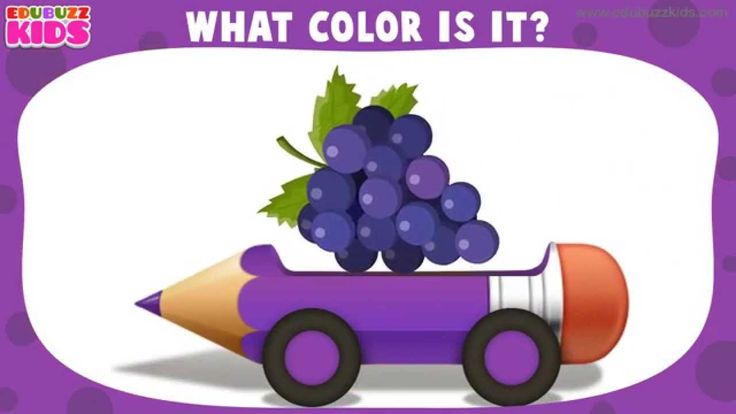
So what color is a given piece of music? The answer depends on both the features of the music (slow/fast, major/minor, loud/quiet, high-pitched/low-pitched, clear/distorted) and the emotions those features elicit in the listener. Fast, loud, high-pitched, music sounds agitated, for example, whereas slow, quiet, low-pitched music sounds calm.
We don’t fully know why that is. But one intriguing possibility is a hypothesis that I like to call “musical anthropomorphism.” Perhaps we perceive music as if it were a person behaving in ways that express emotion. Fast, loud music at a high pitch might be perceived as agitated because when people are agitated, they move more quickly and raise their voices both in pitch and volume. Similarly, slow, quiet, low-pitched music may sound sadder or calmer because when people are sad or calm, they move more slowly and speak more quietly in a lower register.
It’s not yet clear why music in a major key sounds happier to most people than the same music in a minor key.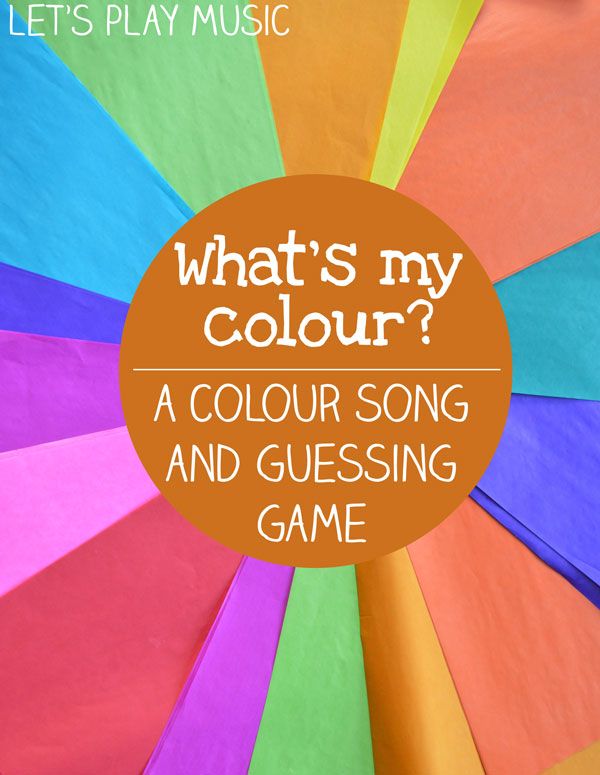 Musical anthropomorphism suggests that it might result from songs in minor keys “drooping” a bit more emotionally than the same songs would in major keys, given that all the standard notes in a minor scale that differ from those in a major scale are a half-tone lower in pitch, and lower pitched vocalizations in the same speaker are associated with saddened affect.
Musical anthropomorphism suggests that it might result from songs in minor keys “drooping” a bit more emotionally than the same songs would in major keys, given that all the standard notes in a minor scale that differ from those in a major scale are a half-tone lower in pitch, and lower pitched vocalizations in the same speaker are associated with saddened affect.
The human brain is an incredibly powerful, all-purpose associative engine for discovering relations among our senses.
Perhaps the most important message about music-to-color connections in synesthetes and non-synesthetes is the central role emotion plays in our mental lives, even when it is not immediately obvious that it is relevant. Music and colors have few, if any, sensory properties in common: Music is auditory and has properties such as tempo, pitch, timbre, and rhythm. Color is visual and has the properties of lightness, vividness, and hue. But both music and color map aspects of emotion.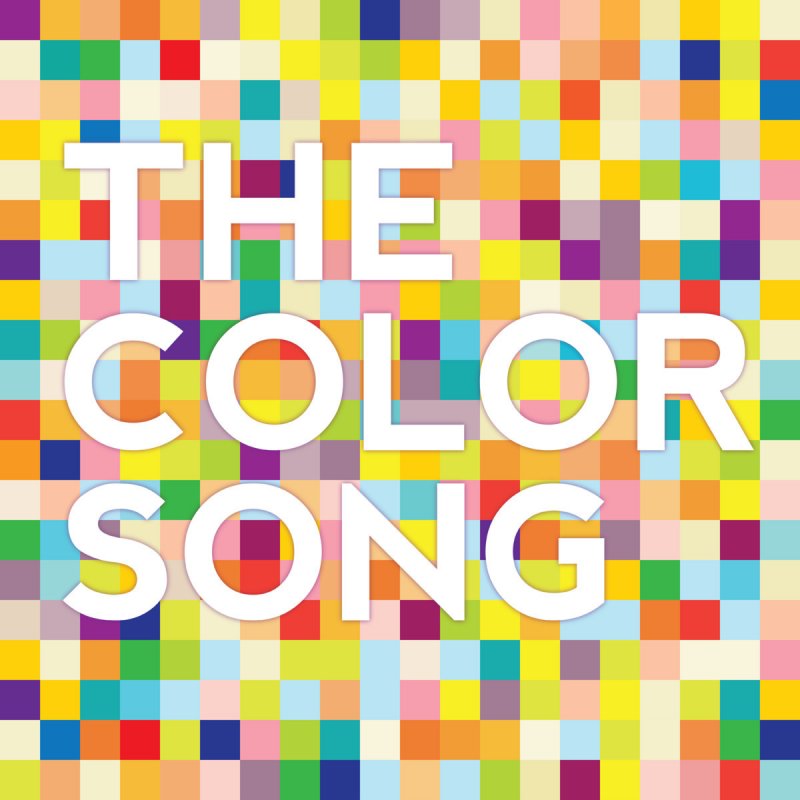
Color has its own form of anthropomorphism. The strong connection between red and anger is likely due to the fact that blood is red, which makes angry faces redder than calm faces. Anger also tends to lead to violence, which can, in turn, lead to red blood being spilled. The links from bright yellows to happiness and from dark blues and grays to sadness are less clear, but may arise from people’s emotional responses to different weather conditions. People are generally happier on sunny days with a bright, warm, yellowish light and sadder on cloudy days when the illumination is darker, gray, and tinged with blue. We often speak of people who are depressed as “feeling blue” or “living under a cloud.”
Emotion connects us to so many different things in our lives that we are left to wonder about its evolutionary purpose. It seems likely that emotional responses funnel sensory information into tendencies to behave in particular ways. Happiness most often leads to approach and engagement, sadness to withdrawal and inaction, anger to aggression and violence, and fear to fright and flight.
Our experiments continue. Currently, for instance, we are studying the emotional effects on music-to-color associations in Turkey and the U.S., using traditional Turkish music that differs from western music not only in the instruments used, but in that it has many more modes (makams) than the western modes of major and minor.
So far we have been endlessly intrigued by our results. The human brain is an incredibly powerful, all-purpose associative engine for discovering systematic relations among disparate sensory inputs. Emotions are potentially relevant to almost everything we experience, even when those experiences arise from different kinds of information in different brain regions. I have a feeling that as scientists study people’s responses to different kinds of sensory input more fully, the importance of emotion in creating integrated, meaningful experiences will strike an even deeper, more resonant chord than it does now.
Stephen E. Palmer is a professor at the Graduate School in Psychology at the University of California, Berkeley. He is the author of Vision Science: Photons to Phenomenology, and co-editor of the recent Aesthetic Science: Connecting Minds, Brains, and Experience.
He is the author of Vision Science: Photons to Phenomenology, and co-editor of the recent Aesthetic Science: Connecting Minds, Brains, and Experience.
References
1. Cytowic, R.E., & Eagleman, D. Wednesday Is Indigo Blue: Discovering the Brain of Synesthesia MIT Press (2009).
2. Palmer, S.E., Schloss, K.B., Xu, Z., & Prado-Leon, L.R. Music-color associations are mediated by emotion. Proceedings of the National Academy of Sciences 110, 8836–8841 (2013).
3. Palmer, S.E., Langlois, T.A., & Schloss, K.B. Music-to-color associations of single-line piano melodies in non-synesthetes. Multisensory Research (2015).
4. Ramachandran, V.S. & Hubbard, E.M. Synaesthesia—a window into perception, thought and language. Journal of Consciousness Studies 8, 3–34 (2001).
5. Cytowic, R.E. Synesthesia: Phenomenology and neuropsychology. Psyche, 2, (1995).
6. Ward, J. Emotionally mediated synaesthesia.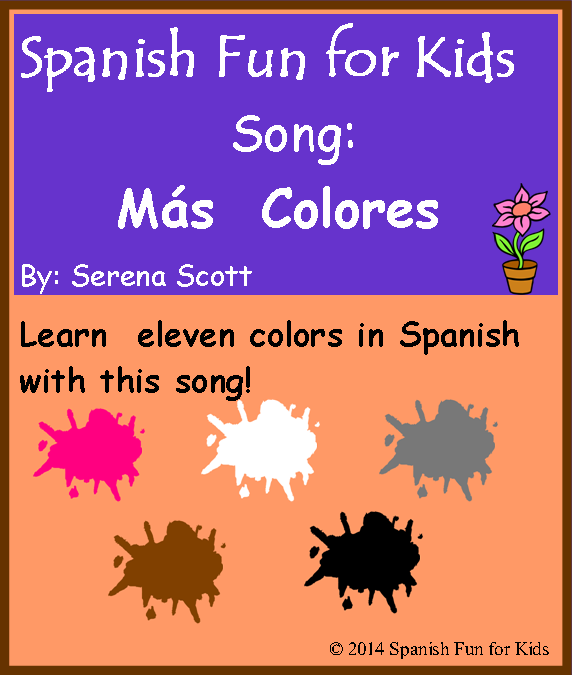 Cognitive Neuropsychology 21, 761-772 (2004).
Cognitive Neuropsychology 21, 761-772 (2004).
Get the Nautilus newsletter
The newest and most popular articles delivered right to your inbox!
Tamerlan and Alena - What color lyrics
View all lyrics Tamerlan and Alena
What color do you need my love?
Without answers, we go into our thoughts again.
I meet sunrises again without you,
Didn't notice that I'm yours.
We dissolved into each other like clouds,
Steps along the edge and again a running line.
Let's forget the grievances of the day before last,
I miss you so much again.
Call me, I'll follow you,
And I will fall into your tender arms.
But what are we to do now?
We're off the hook again.
It's like I'm rising above the ground,
I live only for you.
But don't close my door,
I'm off my hinges again.
Let's make our dreams come true
I'm not afraid of heights with you.
Under water, but without oxygen, I sink deeper and deeper.
I understand that the road leads, and that you need me.
I know it's hard, but we can, because between us, oh my,0005 So many rivers and oceans, I'm looking for you among the mists.
Lost without blows, I'm not afraid of oncoming blows.
What color is your love for me? Paradise apple or snake?
When we're together it's all pointless,
I don't believe in rumors, I don't believe in numbers and only in words...
Call me, I'll follow you,
And I will fall into your tender arms.
But what are we to do now?
We're off the hook again.
It's like I'm rising above the ground0005 I live only for you.
But don't close my door,
I'm off my hinges again.
Let's make our dreams come true
I'm not afraid of heights with you.
But what shall we do now?
We're off the hook again.
It's like I'm rising above the ground,
I live only for you.
But don't close my door,
I'm off my hinges again.
Let's make our dreams come true
I'm not afraid of heights with you.
Did you like the lyrics?
Leave a comment below
Correct lyricsSee all lyrics Share a link to the text:
Text rating:
All explanations:
1 "We dissolved into each other like clouds,"
We dissolved into each other like clouds 9007 - were 9005
- Text-pesni.com
- T
- Tamerlane and Alena
- What color is
Popular lyrics and translations of songs by Tamerlan and Alena:
What color
Tamerlane and Alena
No return (You will never forget me)
Tamerlane and Alena
My dream
Tamerlane and Alena
If anything, dial
Tamerlane and Alena
Let's Talk
Tamerlane and Alena
Popular lyrics and song translations:
LP (ft. Milana Star)
Milan Khametova
Silhouette (Miyagi, Silhouette)
Miyagi & Endgame
Vredina (Bakr)
Bakr
Birthday
Irina Allegrova
Tell me / Asa du
JANAGA
Your gentle gait (That winter not far away)
Timur Mutsuraev
Black Love (ft. MONA)
ELMAN
Mermaid's Curse
Green Orange
A blue tractor is coming towards us (Across the fields across the fields)
Children's songs
Kayfusha (Santiz)
Santiz
Best lyrics and translations of songs:
Shine (Ramil)
Ramil'
We party wildly (ft. Nikolai Baskov)
Danya Milokhin
If you feel sad (ft. NILETTO, Rauf and Faik, Niletto)
Rauf & Faik
Youth (Good, We will put the sound on the whole neighbors do not sleep)
Dabro
Buttercups (I watch our old cartoons)
Just Lera
I'm getting drunk again (Slava Marlov)
Slava Marlow
Fendi (Raheem Fendi hoodie Gucci Prada Louis on me)
Rakhim
It hurt and passed (Yes, everything went away)
HENSY
sky (ft. Zivert, Sievert, don't get sick, Lei from the sky)
Basta
Dance Like This (From Dream Team's Tik Tok)
Your Marusya
Similar lyrics and translations of songs:
What color
Tamerlane and Alena
What color is summer
Magic Microphone
Chocolate colors
Pasha Proorok
LEAF COLORS
LOVELYDILLER
BRIGHT COLORS
OFFMI
Song lyrics Shanghai - What color are the clouds translation, lyrics, video, clip
What do clouds look like?My blind son asked me.
I would explain to you, but how?
After all, you do not see, my dear.
"Well, explain somehow,
Like everyone else, I want to know everything.
And, it is true that they are swimming,
And can they disappear quickly?"
Yes, it's true, clouds
There are different, son:
This is like a river,
And this is a lush stack of hay.
Here, these are fisherman's nets,
And this is like a gray wolf.
"Well, dad, why are you silent,
And your hand is shaking?"
Then I didn't tell my son,
That a black cloud is one
Looks like his eyes
With glasses, like the darkness of the night.
"What do all the colors look like?"
My blind son asked me.
I would explain to you, but how?
After all, you do not see, my dear.
"Well, explain at least somehow.
I, like everyone else, want to know everything,
And it's true that they bloom,
And I can't understand them?"
That's red, son,
He is as hot as boiling water.
And this is white, it is so beautiful,
It's like cold ice.
And autumn is full of gold,
She is kind like your mother.
Grass green itself,
Reminds me of you.
Then I didn't tell my son,
That black is familiar to him.
After all, he does not see anything,
And for him it's black all around. What's it like clouds?
I asked my son blind.
I would have explained to you, but how?
After all, you don't see my mother.
" Well, explain it in any way,
I, like everyone else, want to know everything.
Is it true that they are floating ,
And can quickly disappear? "
Yes, it's true , clouds
Are different , my son :
Here it is - as if a river,
And this - lush hay stack .
Now, that's - Network fisherman
And this is - like the gray wolf.
" Well, Dad, what are you silent,
And you trembling hand? "
Then I said son,
That one black cloud
Similar to his eyes,
With glasses, a night mist.


